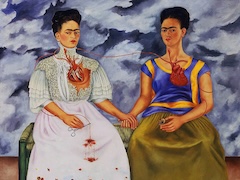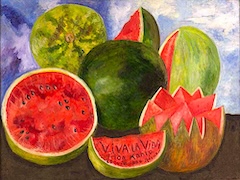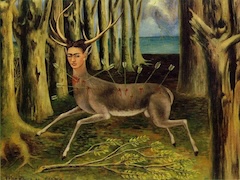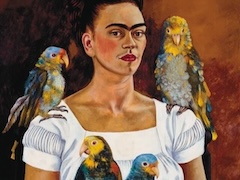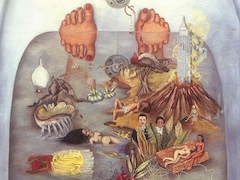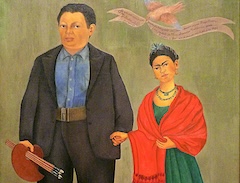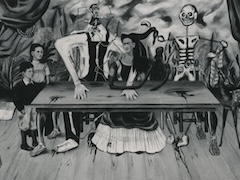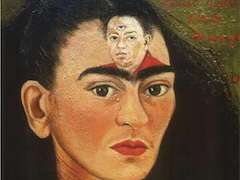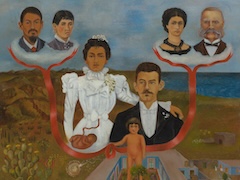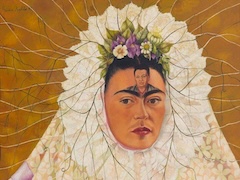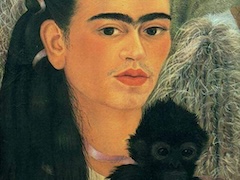Pitahayas, 1938 - by Frida Kahlo
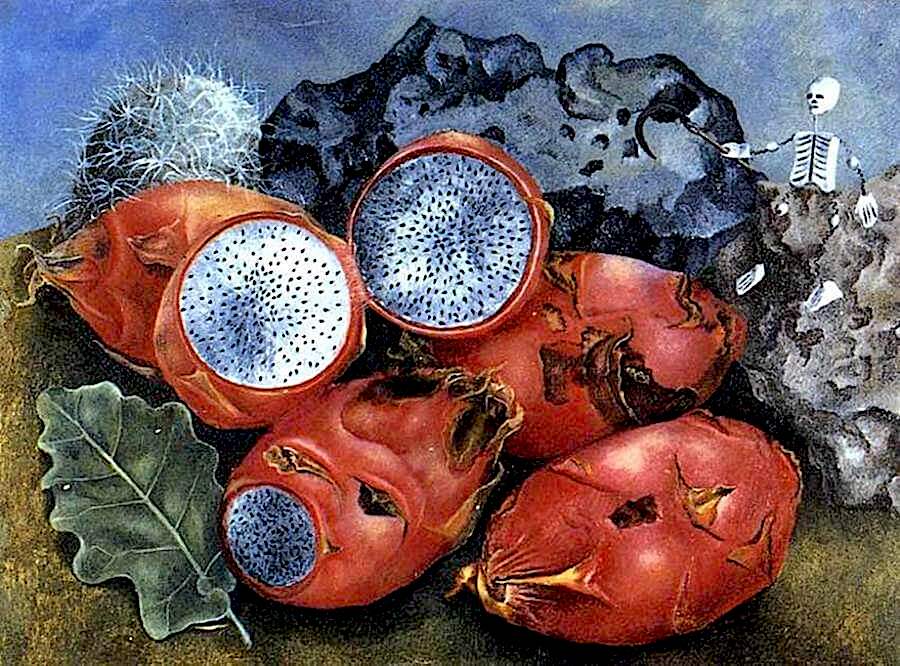
Frida Kahlo's painting is a still life of five pitahayas. The pitahaya is a desert fruit with a melon-like taste that grows on rocks or in thickets. It is ovoid with a thick yellow skin that swells with excrescences and bulges. The inside is a mass of dense, translucent white flesh that contains many small black edible seeds. Kahlo loved pitahayas for their sweetness and juiciness.
In many respects, Kahlo's depiction is realistic, even including two pitted rocks and round cactus to suggest the fruit's habitat. But the artist takes liberties and makes certain decisions that give her still life its special meanings. First, these pitahayas are decomposing; the healthy yellow skin has over-ripened to a garish red-orange. The skins have burst open, and brown rot has set in. One has been sliced open to reveal what we would expect, the white flesh and black seeds. But the cuts are perfectly rounded rims. The sectioned fruits stare out with other-earthly eyes. Presiding over the fruits is a small seated skeleton who holds a scythe that identifies it as the grim reaper - death itself. This figure is a calavera. It is associated with El Dia de los Muertos (The Day of the Dead), Mexico's most popular holiday that commences for two days on November 1 - All Saints Day in the Catholic liturgical calendar.
Kahlo's still life is a meditation on death. Because of its watery freshness that can provide sustenance in the most barren of terrains, the pitahaya is known as the "fruit of the shipwrecked man." But even this most life-giving of fruits is given to decay. If realistic in certain details, this still life is magical.

